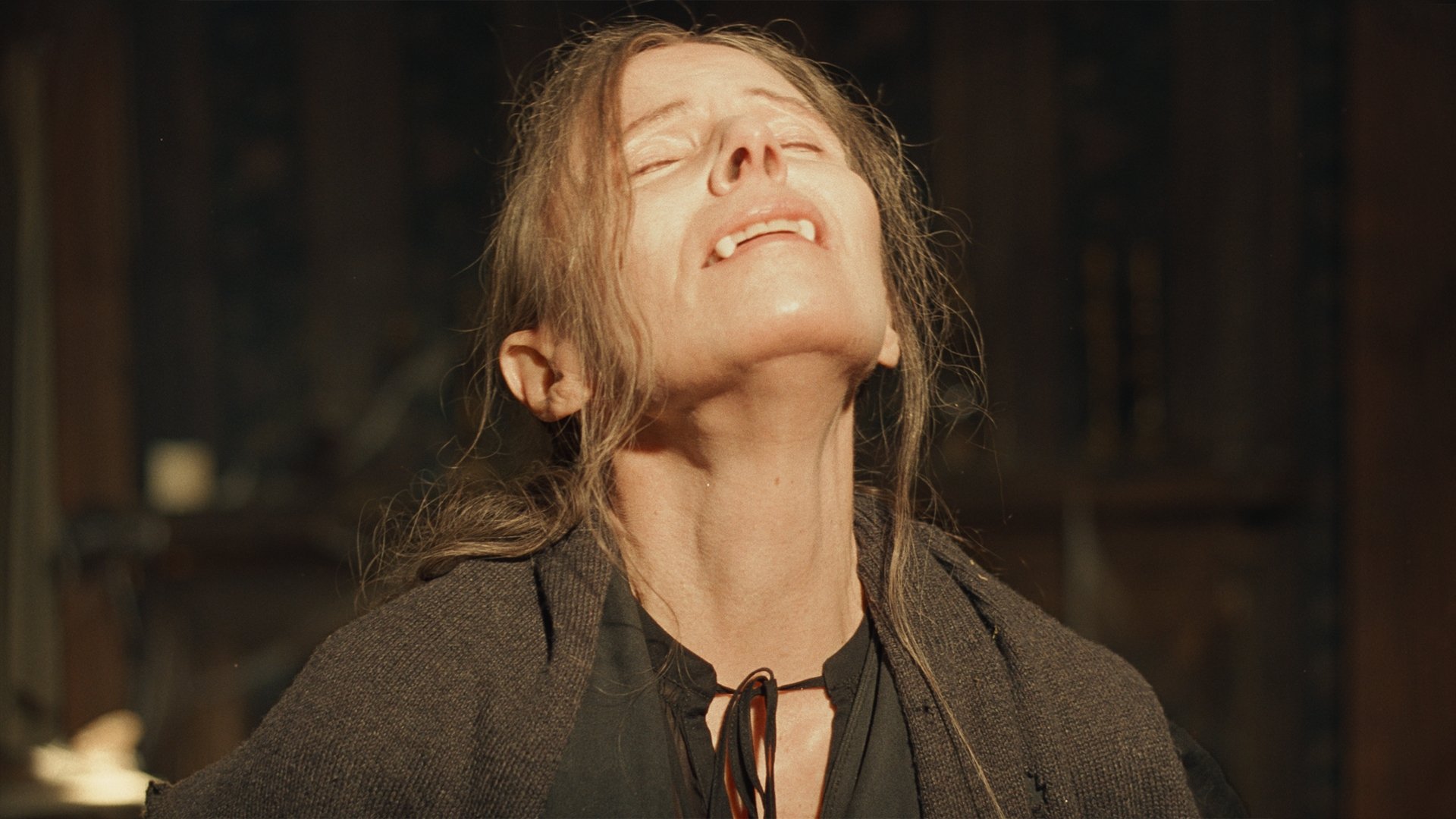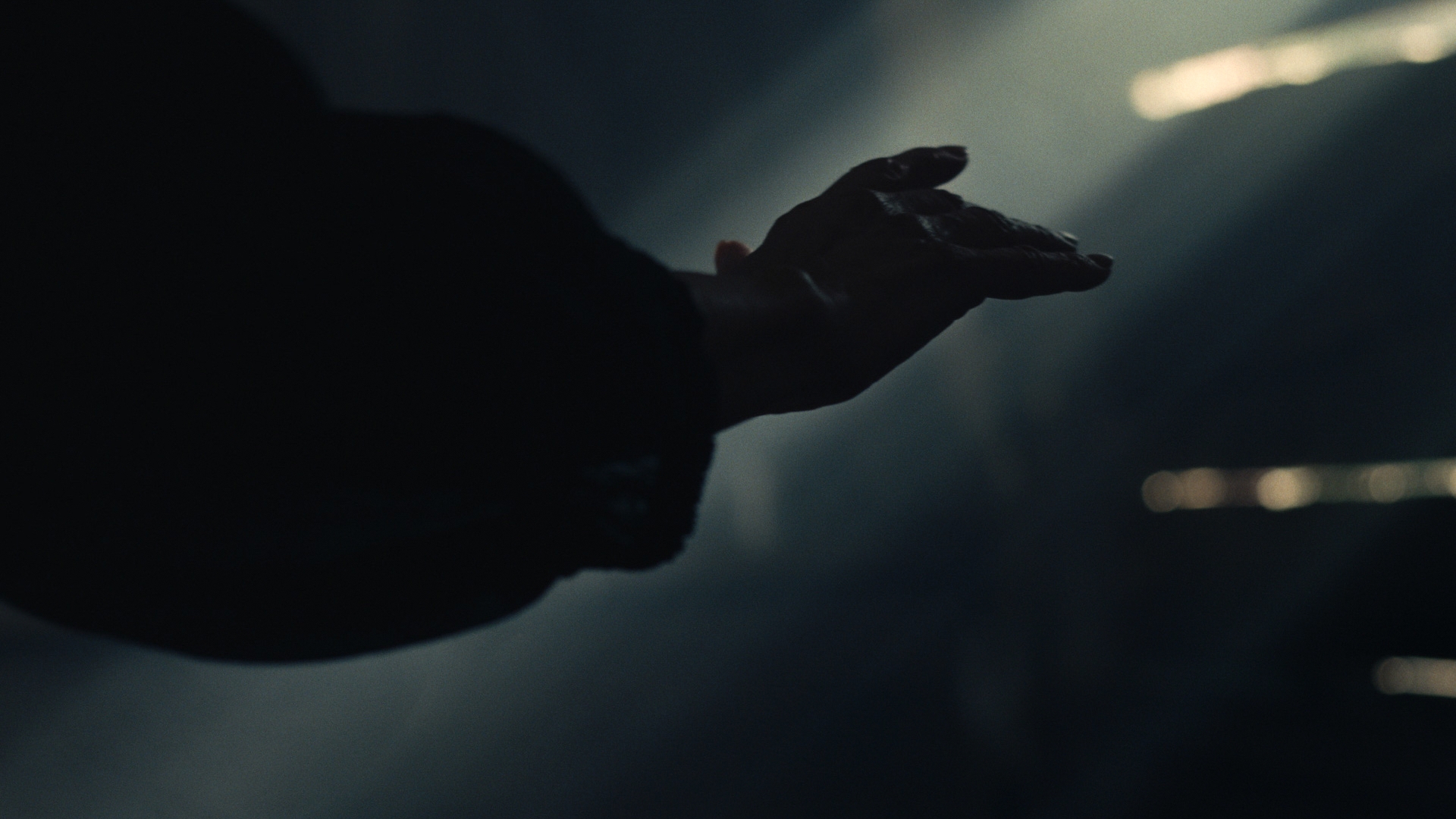
Darkness-Driven: Im Finstern
Cinematographer Hannah Platzer discusses her ASC Student Heritage Award-winning horror short.
During the second year at the American Film Institute (AFI), cinematography students are given the Visual Essay assignment — for which they must originate an idea, assemble a team, and shoot a non-dialogue short on 35mm film. “I wanted to do a practical project about darkness and what I’d learned from my research,” cinematographer Hannah Platzer says.
Telling the story of a vampire’s impossible love of the sun, Platzer’s film, Im Finstern, received the 2023 ASC Owen Roizman Student Heritage Award in the Graduate Category, largely due to its distinctive, character-motivated use of darkness. (In fact, the project’s title is German for “in the dark.”)
Each year, the ASC presents its three Student Heritage Awards in honor of departed Society members. One of the most influential cinematographers of the modern era, Owen Roizman was behind the camera on iconic features including The French Connection (1971), The Exorcist (1973), and Network (1976). He earned five Academy Awards nominations throughout his career, received the ASC Lifetime Achievement Award in 1997, and was presented with an Honorary Oscar statuette in 2018 for his exceptional contributions to cinema, before passing away at the age of 86 in 2023.
The concept of darkness has been a longtime fascination for Platzer. For her first master’s thesis at an art school in Cologne, Germany, she conducted a survey regarding the subject. “I tried to understand darkness,” Platzer explains about her thesis. “I interviewed deep-sea biologists, an optometrist, a psychologist, a silhouette painter, and many other people who had something to do with darkness. I spoke to them about darkness in their field, and then tried to find a more nuanced understanding than I previously had for myself.”


As this was a cinematographer-led project, Platzer was more involved in the story development than might be usual. Deciding to depict a vampire story she had previously written, Platzer brought on director Mahyar Mandegar, with whom she had collaborated previously. “From that moment on, we worked on the project together,” she says, “We wrote the script and spent weeks together prior to the shoot. Even when we weren’t talking about the film, we were experiencing things through the ‘lens’ of the film.”
Together, Mayhar, Platzer and production designer Emily Mingyue began pulling references from varied sources: paintings, poetry, photography, books, and cinematography. “We were looking for darkness that was atmospheric, not information-less, because this person [the vampire] exists in the darkness,” Platzer recalls. One painting, Portrait of Isaku Yanaihara (1956) by Alberto Giacometti (which is displayed at LACMA), particularly stood out to them. “The whole image is bright, but there was something about that translation between light and dark that informed a lot for us.”


In the realm of cinema, Platzer found herself drawn towards the works of Owen Roizman himself. “Owen Roizman shot both The Exorcist and The Addams Family. Where The Exorcist works with the horror element of darkness, the not seeing/knowing, The Addams Family has a lighter approach to it. Nonetheless, both are dark films. This difference was really appealing to us.” From her references, Platzer made an extensive storyboard of different shades of gray and black, studying where the eye was drawn according to shade.
Creating the lighting plan, Platzer was meticulous about creating an even “blanket of light” to portray the vampire’s perspective of the darkness. “Darkness itself is quite low-contrast because you have a more concentrated sense of highlights,” Platzer notes, “Highlights can quickly read as light.”
Shooting at a standing barn set in Santa Clarita, Platzer realized this “blanket of light” with LiteMats, a Lantern 90, Quasar tubes and haze. For the sunlight, Platzer used natural light reflected off of CRLS 100s and 50s through the windows.
“Even though this is a film about darkness, the set was brightly lit,” Platzer says with a laugh, having rated the film at 50 ASA.
During prep, Platzer spent time with Mark Van Horne — the then director of production services at FotoKem and an ASC associate member — who allowed her to look over push-pull tests from old Spaghetti Westerns. From that, she conducted a test at AFI with Kodak Vision3 500T 5219 and 200T 5213 stocks processed normally, pulled one stop, and pulled two stops. She concluded that 5213 pulled one stop and overexposed two stops fit their needs the best. “We overexposed one and pulled one so we have a soft fall off, which I liked for this look, Platzer says. “We then overexposed another stop that we would bring down in post so we could have all the information of the dark production design and corners.” Subsequently lighting for an effective 50 ASA, the set was bright as day. “We were shooting darkness, but in absolute brightness,” she says. “That was something to adjust to and have everyone trust in you.”
Platzer credits the film’s success at the ASC Student Awards largely to her aforementioned collaborators, Mahyar Mandegar and production designer Mingyue “Emily” Li; producers Mon Castro Bustro and Santi Naidoo, gaffer Tu Do, key grip Matt Kleppner, and the rest of her crew. She also expresses gratitude to her mentors in the AFI Visual Essay Program and peers of the 2023 cinematography class, who advised her along the way.
Today, Platzer has graduated from AFI and is working as a freelance cinematographer. Platzer is incredibly appreciative of the ASC’s recognition of Im Finstern and will carry the lessons and curiosities about darkness with her into her future works.






